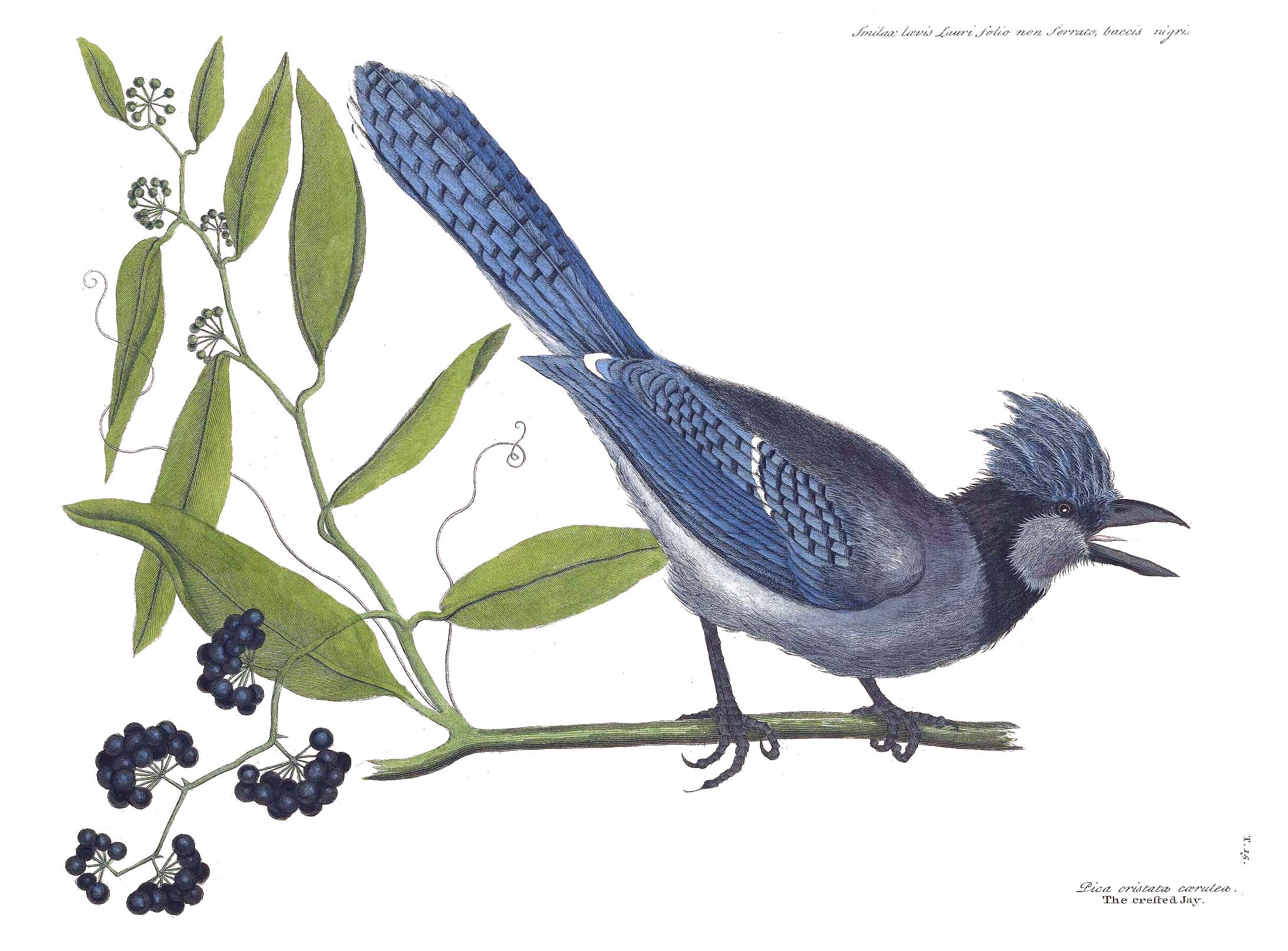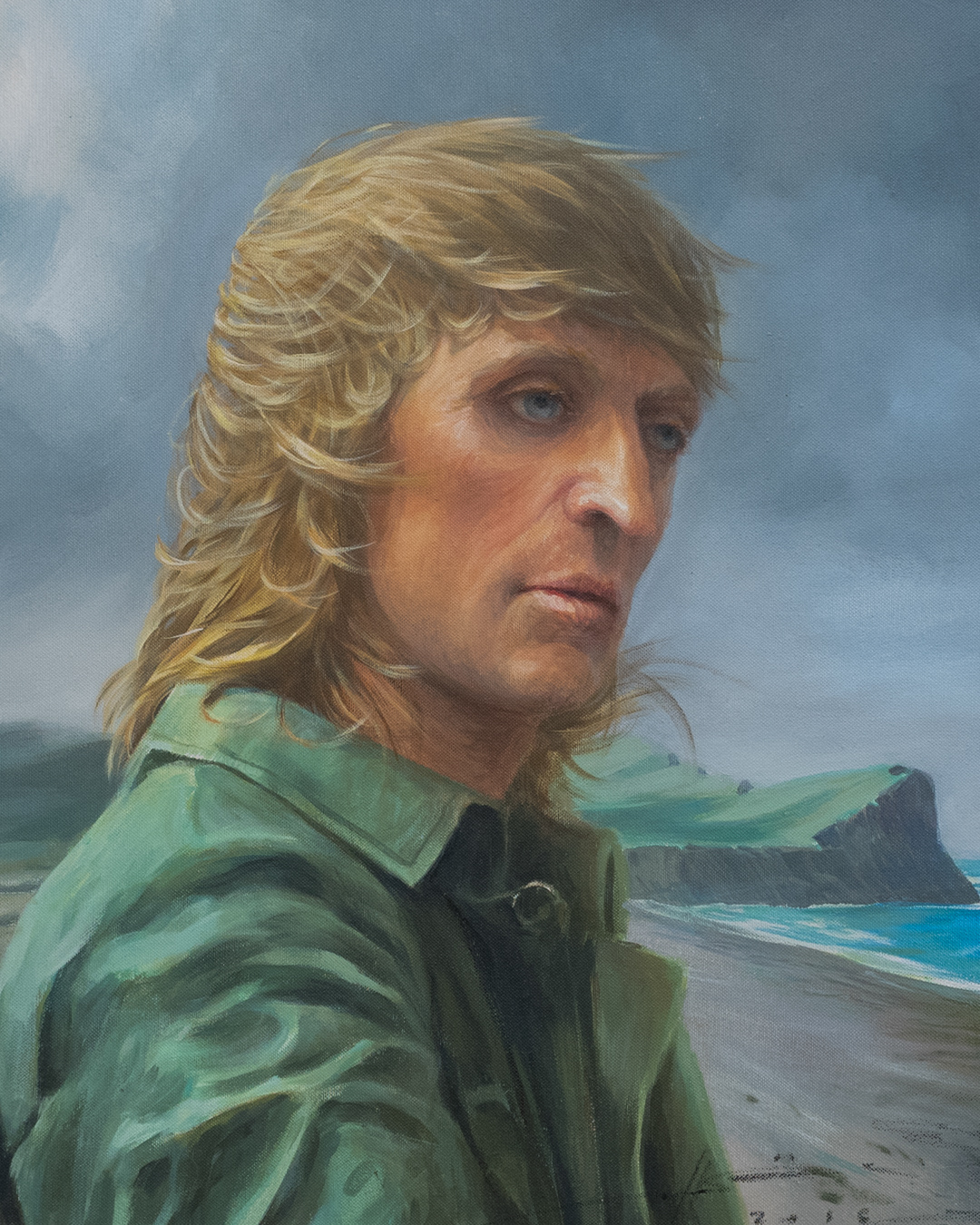On March 10, 1709, the future famous naturalist Georg Wilhelm Steller was born in the German town of Windsheim. The tireless traveler devoted his life to science. He was a botanist, a zoologist, an ethnographer, and a geologist. Ornithology occupied a special place in his research.
On Kayak Island alone in the summer of 1741 Steller noted dozens of previously unknown birds, all of which differed from European and Siberian ones by "especially bright colors." "Cossack's son" Foma Lepekhin landed on the shore with him, a constant companion and assistant of the naturalist on a sea voyage. A well-aimed hunter managed to get a sample of a jay. Steller immediately recalled that he had seen a close-up image in Natural History of Carolina, Florida and the Bahamas album (1731) by English naturalist and artist Mark Catesby. This discovery convinced the scientist that the expedition was indeed off the coast of America. The extracted sample has not survived, however, the scientific community immortalized the name of the naturalist in the name -Cyanocitta stelleri, or Steller's jay.

Steller's jay (Cyanocitta stelleri).
During a forced wintering on an uninhabited island, later named Bering Island, Steller observed many birds. Many were familiar: the raven, almost indistinguishable from the German "rabe"; partridge; wren, similar to the common for Widsheim "zaunkonig" (later the Aleuts of the Commanders will call it "limashika"); flocks of waders on the coastal shallows and various sea ducks. Among the ducks, one particularly stood out. it was the one described by Pallas in 1769 asAnas Stelleri(todayPolysticta stelleri, Siberian, or Steller's eider). According to the US zoologist L. Steineger, when in November 1741 the crew of St. Peter landed on the shore, large flocks of birds that had arrived for wintering were already "swinging on waves along the entire eastern coast."
But the most remarkable find was a large, poorly flying cormorant. The weight of these birds often exceeded 6 kg, two greenish-blue crests adorned their head, and bright whitish spots around the eyes resembled glasses. The bird was namedPhalacrocorax perspicillatus- spectacled or Steller cormorant. During the wintering 1741-1742, spectacled cormorants were numerous in the rocky bird colonies of the island, and the team hunted them for food. But the first sample was delivered to St. Petersburg only in 1833, almost 90 years later. And after a couple of decades, the species ceased to exist.
In the famous "Description of the Land of Kamchatka" by Georg Steller, several chapters are devoted to birds. He divided Kamchatka species into three categories: marine, aquatic (freshwater) and terrestrial. The description contains both common and local names. Many people know that cormorants were called urils and guillemots were called aras. But no one remembers anymore that in Kamchatka the tufted puffin was called michagatka and igilma, and black-headed gulls were called martyshkas. All descriptions are very interesting and detailed. For the "sea knife-tail" (long-tailed duck), he even gave a musical scheme of singing.
Over the years of his life in Kamchatka and on the islands of the Pacific Ocean, Steller met representatives of three species of eagles. He called one group of birds "sea eagle (Haliaetus)" (white-tailed eagleHaliaeetus albicilla), another one - "snow eagle (Naevia)" (most likely the Steller's sea eagle; Pallas called the bird "Steller's sea eagle"). For the third species, the naturalist gave a detailed and rather colorful description: "is black, except for the head and rear", "is the same size as the sea eagle" and added that birds are much less common in Kamchatka than in America and on the islands. During the winter on the island, the team ate poultry meat, but they never managed to get a collector's item. Steller tried to inspect the living nest, but not very successfully: "chicks attacked me with such ferocity that I only with difficulty fended them off with a stick." No doubt it was the bald eagleHaliaeetus leucocephalus.

Steller's sea eagle (Latin Haliaeetus pelagicus)
Steller had more than just a scientific interest in birds. During his forced wintering, he made bone smoking pipes from the "legs" of "large black sea gulls" (short-tailed albatross) and paid with them and tobacco for various small services.
Many collection samples collected by the naturalist in Kamchatka and the Commanders have been lost. But the skins of the albatross, the tufted puffin and some other birds have survived.
Materials for publication were prepared by Tatarenkova N.A., head of Historical and Cultural Heritage Preservation Department.










